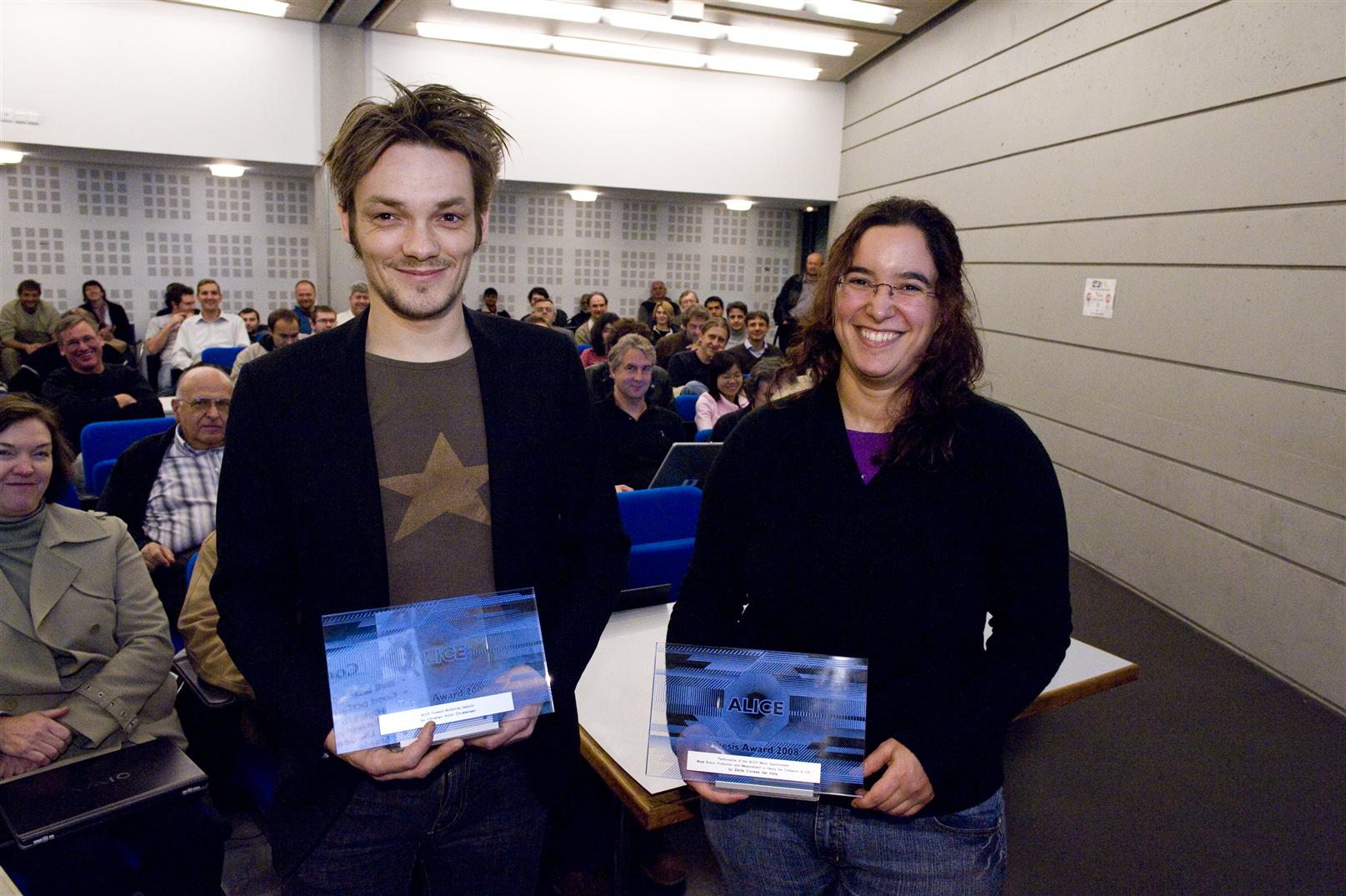ALICE gives its first thesis awards
For the first time the ALICE collaboration has given two of its doctoral students awards for their outstanding theses.
On 29 October the ALICE collaboration honoured two students for their outstanding theses at a ceremony held at CERN. The two awards, one of which was given for a physics thesis and the other for a technical thesis, went to Zaida Conesa Del Valle (Laboratoire de physique subatomique et des technologies associées) and Christian Holm Christensen (Niels Bohr Institute) respectively.
"It is very gratifying to see that the collaboration appreciates our work," said Zaida Conesa del Valle, winner of the physics award for her thesis: Performance of the ALICE Muon Spectrometer. Weak Boson Production and Measurement in Heavy Ion Collisions at the LHC. "I also feel specially thankful to all the people who worked with me," she added. "It was pleasant and very informative to work in a collaboration where you can interact with so many people with complementary skills."
There are over 300 doctoral students working for the ALICE collaboration. Each year they receive roughly 20 theses, but this is the first time that awards have been given for the best of these theses. Earlier in the year the collaboration asked the supervisors to nominate exceptional candidates for the award, and of the eight nominated, two winners were finally chosen.
"All eight were very good, it was a very close call," said Hans-Ake Gustafasson, chair of the award committee. "We feel that it is important to recognise the role of doctoral students at ALICE, and we hope that this award will help promote the involvement of young people"
"Even in a collaboration with 1000 or more people, the work done by students can still make a big impact. Christian’s thesis on the Forward Multiplicity Detector will have a direct influence on how we use the detector and how we interpret the data. And Zaida’s work will be extremely important once we have built up statistics from the collisions."


